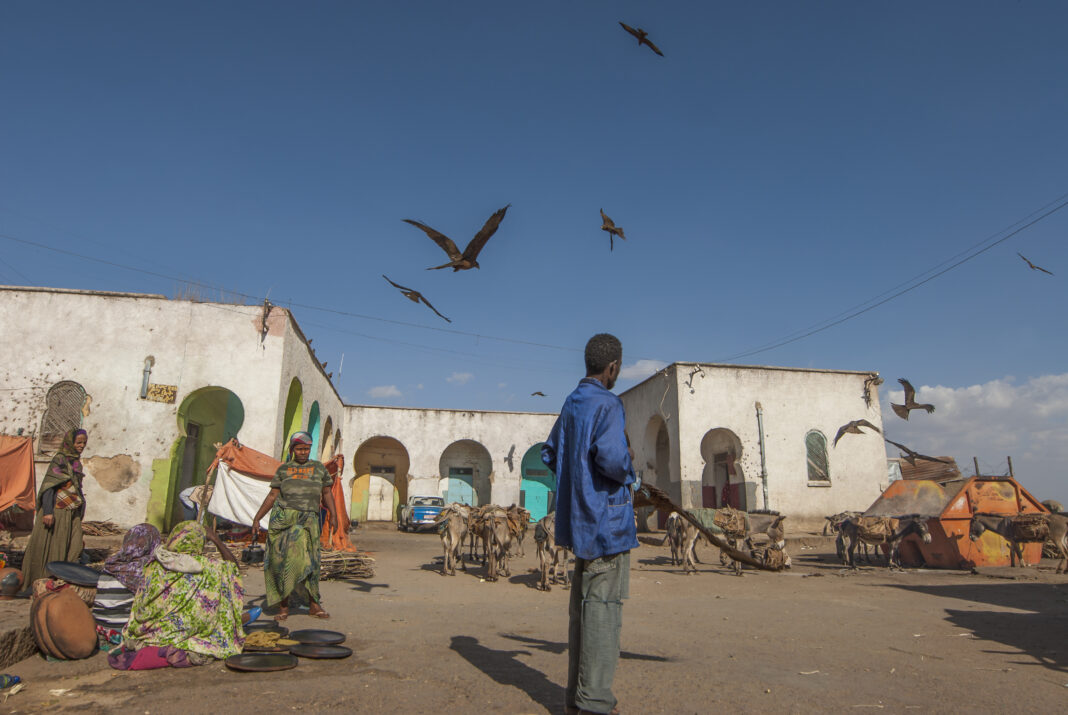by Silvia Orri
Read part 1 here Read part 2 here
Different lives, histories, choices and aspirations unfold between individuals geographically separated by hundreds of kilometres. Yet in the midst of this apparent disparity, a common vocabulary gradually emerged during my various encounters – a set of key concepts that resonated through their frequent repetition.
Foremost among these shared notions is the prevailing despondency in the face of war. Ethiopia is in a state of stagnation, its vitality dwindling by the day, making the road to recovery increasingly arduous. The series of conflicts has left Ethiopia isolated, with few links to the outside world. Trade, construction and tourism have all but ground to a halt, prompting foreigners to seek alternative destinations.
The impact extends beyond the economic sphere, as there is a widespread fear that the post-war aftermath will deeply undermine co-existence and solidarity among the country’s more than 80 ethnic groups. This fear is rooted not only in economic challenges, but also in the concern that conflicts fuelled by repressive policies could sow distrust and hatred among those who peacefully share their lives with people of different ethnic backgrounds. The prevailing sentiment among Ethiopians is a reluctance to let conflicts between armies escalate into conflicts between neighbours.
Another word in this common vocabulary is ‘forgiveness’. When I asked people about their relationship with the Italians and the colonial interlude of the fascist period, I found that there was no residue or sediment of resentment and rancour. There is clearly a sense of pride that the tenacious Ethiopian resistance was able to defeat the fascist invaders and history speaks for itself. History, the massacres and atrocities that we still manage to hide in our books; this time we brought the conflict upon ourselves. As an Italian people, we have not yet chosen to make peace with those uncomfortable truths that are part of us in a sneaky, hidden and repressed way.
The call for reconciliation with the historical past, especially with the “Italians (not) good people”, is emphasised as a means of confronting uncomfortable truths. The ignorance of the dark aspects of Italian history during the fascist colonial campaigns is described as “the great distance” or, from another perspective, “the great left behind”. The lie that infrastructure, entrepreneurship and jobs were exported during this period still persists and requires recognition, study and acceptance in order to overcome the collective shame.
The unresolved legacy of chemical weapons, mestizo laws, asphyxiating gases and propaganda from almost a century ago remains palpable. But Ethiopians have played a crucial role in confronting this history. The narrative emphasises the need to unravel and understand this shared history.
After the Italian occupation of Addis Ababa on 5 May 1936, the invaders quartered their troops in the palace complex of Emperor Haile Selassie. Concrete steps were built next to the flagpole: one step for each year of Fascist power since Mussolini’s march on Rome in 1922. It was here that the assassination attempt on Rodolfo Graziani triggered a bloody and cruel reprisal that led to the Debra Libanos massacre. The palace is now a museum and the area is one of the main sites of the capital’s university. This staircase was not removed and the Ethiopians decided to place a statue of a Judas lion on the last step. Banish the removals and demolitions and make way for remembrance and dialogue.
To learn more, read our Ethiopia conflict factsheet
On the cover photo, unidentified Ethiopian man watches vultures at meat market in Harar ©Vlad Karavaev/Shutterstock.com
























